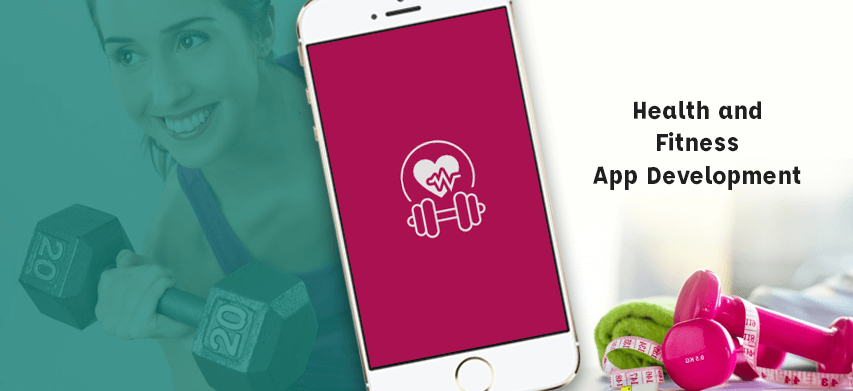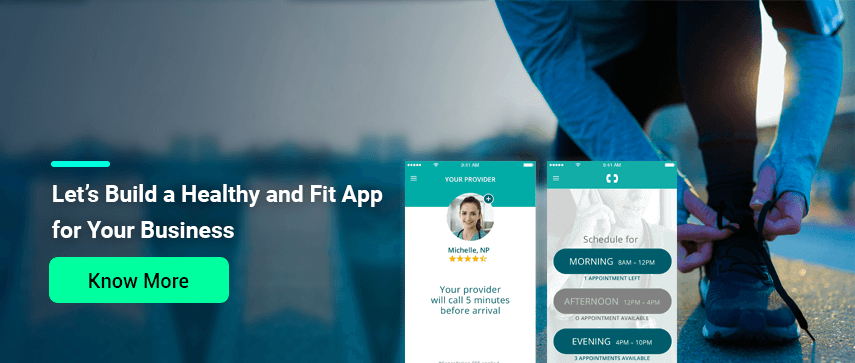Today’s world revolves around smartphones. Gone are the days when people used to pay their bills and carry out errands manually. With the advent of smartphones powered with powerful and user-friendly OS’ like iOS and Android, the modest mobile has been now transformed into a powerful personal tool which can be used to carry out almost any task an individual might want.
Mobile Apps at the Forefront of Smartphone Adoption
The forecasted number of smartphone users worldwide is expected to go up from 2.1 billion in 2016 to 2.87 billion in 2020. The exponential surge in the growth of smartphone users has paved the way for a new market to be formed, the app market.
There is a huge number of apps available for smartphones on the app store that are attributed to a certain genre such as gaming, entertainment, fitness, and so on. Fitness apps have seen a surge in downloads in the recent years because of people realizing the importance of maintaining their health to avoid diseases. It is no wonder that Monthly Active Users (MAU) for the top fitness app – Fitbit has 23.6 million users in the US in July 2017. Some other noteworthy apps in this niche include S Health from Samsung, MyFitnessPal, and Google Fit.
This is the reason why a lot of developers are creating fitness apps with distinct and unique features to help people better track their health. Therefore, here is some information to keep in mind in order to build a fitness app.
Why Fitness Apps?
When apps were first introduced to the masses, a majority of the people thought of apps as a source of entertainment. Games and quirky apps were the most downloaded ones in the app market. This is the main reason why fitness apps did not have that much impact on the people back in the day.
Smartphones were not popular enough to be taken seriously, but with apps getting more and more efficient and accurate, lifestyle and fitness apps took a huge leap forward. According to statistics, the fitness wearables industry is set to become a USD 9.7 billion industry by 2019. Worldwide, wearable device shipments will rise from 117.51 million units in 2016 to 263.19 by 2020. That translates to a whopping 124% increase in just 5 years.
This is a strong enough reason for developers to create a fitness app. The fitness app industry is also going to grow alongside the fitness wearables industry. This is the primary reason to consider building a fitness app. However, there are categories of fitness apps and one needs to be clear on what type of fitness app he wants to create.
Types Of Fitness Apps
Fitness apps are increasingly gaining popularity and hence, the types of features offered by them are increasing. There are categories of fitness apps available now that offer a specific set of features that focus on a particular set of fitness related activity.
There are mainly three types of fitness apps available in the market, workout and exercise apps, activity tracking apps, and nutrition apps. There are apps which combine two categories of fitness apps in order to provide a wider scope of utility to the users. But mostly, the apps are specific to one category so that people don’t get confused with the excess features offered by the app.
-
Workout and Fitness Apps

Workout and exercise apps are likely the most popular of the three categories listed here. The main focus of this type of apps is to focus on exercises and showing people how to properly do the exercises. These apps also help the user create a workout plan for themselves to follow.
There are also personal trainer apps available in the market that allow the users to get a personalized workout plan by experts. Some workout apps also have logbooks in them in which users can log their day-to-day workouts and keep a track of their progress. Some workout apps can be paired with fitness accessories to track heart rate and calories burnt.
- Activity Tracking Apps

These apps are gaining more and more popularity quickly due to the fact that these can be used effectively by people who don’t work out much or at all, but still want to track their calories expended by regular activities. Such apps can count calories and number of steps taken. With geolocation, they can also track distance walked. This is very helpful for people who want to move just enough to keep their calories in check.
These apps are also great for people who workout, to estimate total calories burnt during workouts. Now, activity-tracking apps can also be paired with fitness wearables to increase accuracy and get precise information about the users’ daily activities.
- Nutrition Apps

These types of apps are very popular for the primary reason that they help people track their calories. Nutrition apps promote healthy eating habits, daily water intake reminders, and help users track their calories and also provide them with calories contained in various food products.
The main focus of nutrition apps is to set a goal for the users and help them achieve the goal by reminding about daily calories burnt and calculating intake of calories as provided by the user.
Features of Fitness Apps

Now that we have understood how to make a fitness app and have checked out the ideas for health and fitness apps, let us now look at some features offered by fitness apps which make them so utilizable and useful for people wanting to achieve their health goals.
- Accounts for Personal Comparison
Most of the fitness apps provide a service for users to create accounts for themselves when they use the app in order to help them log their daily activities into the app efficiently and hence help them compare their daily progress.
This helps in creating a competitive mindset that encourages the users to push themselves every day in order to achieve their respective health goals. As per a recent research, 3 key objectives spur the use of fitness apps:
- Goal-Tracking (30%)
- Issues awareness (28%)
- Motivation (27%)
- Convenient Account Logins
Fitness apps that have a login feature mostly have a service that allows users to use their social media account to log in in a quick way and save the time required to make a new account for the app.
Most of the fitness apps offered on the Android platform allow users to login using their Google accounts, which proves to be very convenient. Some apps also allow users to login to the app through their Facebook and Twitter accounts among other social media accounts, to further provide convenience.
- Setting Goals

It is instrumental that a while creating a fitness app, developers incorporate a feature which allows users to set goals for themselves to achieve in a set duration. This is so that the person can track his activity and calories accordingly and stay motivated by seeing his progress on the app.
Workout apps can provide a function that allows the user to set goals for increasing lifting power or stamina. The app should also provide notifications regarding the user’s goals to keep him motivated daily and help him achieve those goals efficiently and in a timely manner.
- Personalized Health Info
After having an account made, or after logging in through your Google account, fitness apps always ask for your health-related info like your height, weight, BMI, gender, etc. This is one of the most popular ideas for health and fitness apps.
This is mainly to help the app make a better-suited workout plan personalized for the user. This feature is very important as different people have different stamina levels and daily calorie counts.
- Notifications
Most of the times, it happens that people lose their enthusiasm to train every day, maybe because of bad weather or laziness. This is where notifications become necessary. Regular notifications can provide a great amount of motivation to a person trying to achieve his health goals.
A fitness app should provide regular push notifications reminding the user to regularly do his exercise or consume enough water. Notifications should, however, not become redundant and irritating, which is why developers must allow notifications to be adjusted.
How You Can Make Money from Fitness Apps
Now that we have covered all the reasons as to why you should build a fitness app, the main question that needs to be answered is the question of making money off it. There are many ways to effectively monetize your app. The three most effective ways can be:
- Freemium Version
The most preferred and recommended way for a person to make money from a fitness app is to provide a premium version of the app. The main idea behind this method is to provide some basic functions to showcase your app’s uniqueness, and then offer a paid version to users which provides more exclusive benefits.
- In-app Ads
The other way to monetize your fitness app is by advertising. However, this method is a little risky as people get easily irritated by pushy ads and hence, ads should be placed very carefully so as to not lose customers to other apps with less or no ads. The main problem with advertising is that they distract users from the workouts and also sometimes cut the workout routines in between session which irritates customers.
- Branded Personal Training

Another way of monetizing your app is by offering paid personal training. The users can pay for online personal training which will get them a workout plan and a meal plan made up by the expert trainers. This is also a great way to make money from your app, as it increases brand value and quality personal training may increase customer loyalty.
Getting a Good Tech Partner On-board
A great technology partner with in-depth experience in the healthcare, wellness, and fitness system is an ideal fit for your requirements. A true healthcare mobile app development partner blends your key business objectives with user demands and can come up with a unique mobile app that is distinct from the others.
Our fitness app displays certain distinct characteristics:
- Rich visuals do not distract the users and ensure total involvement
- All necessary elements and functionalities are added in as a part of the core development part. We can also customize additional functionalities that are exclusive to your app.
- Features like provision to create custom meal plans or exercise-based on body anatomy/vitals of users too are possible.
- Crucial UX components of gamification (competition, keeping track of goals) and socialization (sharing milestones achievement with friends) are also factored in.
Be it an MVP or full-fledged product, we are with you for any type of business need you may have to build a fitness app.
To Sign Off
The fitness industry is evidently a hot commodity right now, and the industry is only said to grow in the coming years. This is why if you are thinking to create a fitness app, you should do so quickly in order to amass popularity for the apps and reap rich dividends from this venture.
Be sure to engage with a reliable tech solutions provider like Mobisoft Infotech and more than half the battle will be won in your favor.









 July 6, 2018
July 6, 2018


